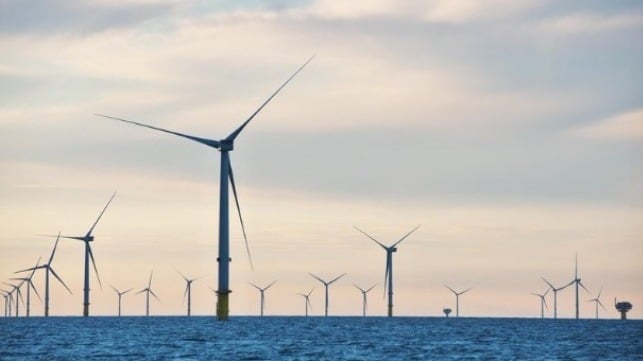UK Increases Funding and Areas to Spur Offshore Wind Energy Development

Offshore wind energy continues to be a key portion of the UK’s plan for renewable energy with the government announcing on May 9 that it will expand funding and the available areas in response to strong demand from the industry. The UK continues to be the leader in Europe and the second largest globally with nearly 15 GW currently installed, while the government has set a target to reach 50 GW by 2030.
This week, the plan appeared to be in jeopardy when Danish developer Ørsted said it had decided to shelve plans for the fourth phase of the Hornsea project. Located 75 miles off the east coast of England, the first phase of the project started generation in 2020 with 1.2 GW of capacity, followed by phase 2 in 1.4 GW in 2022. Construction is underway on Hornsea 3, which will add 2.9 GW, while the now-shelved fourth phase was to provide an additional 2.4 GW. Ørsted cited the continued increase of supply chain costs, higher interest rates, and an increase in the risk to construction and operation on the planned timeline.
Secretary Ed Miliband, heading the Department for Energy Security and Net Zero, countered today asserting that the government continues to receive strong interest for the development of offshore wind energy projects. He said hundreds of bids have been received in the latest government scheme, a “strong signal that industry supports the government’s clean power by 2030 mission.”
Following higher than expected demand, the Energy Secretary said the government was going to increase funding in its Clean Industry Bonus program from the planned £200 million ($266 million) to £544 million ($724 million). The award winners will be announced shortly.
The Clean Industry Bonus program will provide financial rewards for offshore wind developers that prioritize investments in regions that most need clean energy. The government points to the opportunities to aid traditional oil and gas communities, ex-industrial areas, ports, and coastal towns. According to the government, the program will support cleaner manufacturers, new upgraded factories, port infrastructure, and more business for UK supply chains. This and other government support efforts are projected to spur up to £9.3 billion ($12 billion) in private sector investment over the next four years.
“Now is the time to go further and faster to capture this unrivalled opportunity for green industrial growth,” said Claire Mack, Chief Executive at Scottish Renewables.
Last month, Prime Minister Keir Starmer announced they were accelerating £300 million ($400 million) in investment through another scheme, Great Britain Energy, to support the growth of the offshore energy sector. Since taking office in 2024, Starmer’s government has also increased the pricing subsidy and taken other steps to support the development of wind and other renewable energy sources.
At the same time, on Friday, The Crown Estate, which is responsible for the management of Britain’s seabed rights, announced it was also taking steps to expand offshore wind energy. It approved the Capacity Increase Program, which will maximize existing offshore wind lease areas for seven current wind farms. By amending the seabed rights, The Crown Estate estimates an additional 4.7 GW of energy could be generated.
The Crown Estate highlights that the projects were awarded rights in the Round 3 leasing that took place in 2010 or the 2017 Wind Extension program. All seven of the projects have existing grid connections and infrastructure, which The Crown Estate says will enable swift development, noting they are within pre-established offshore wind energy sites.
